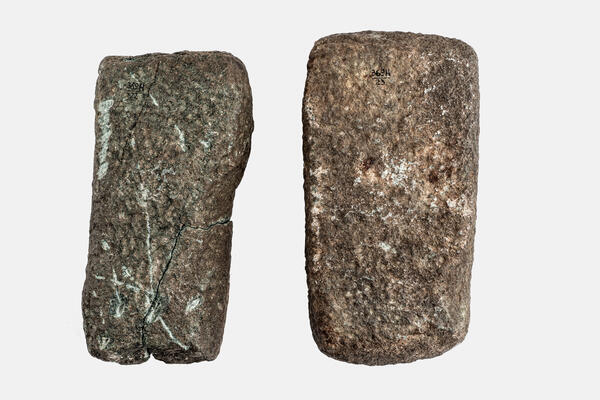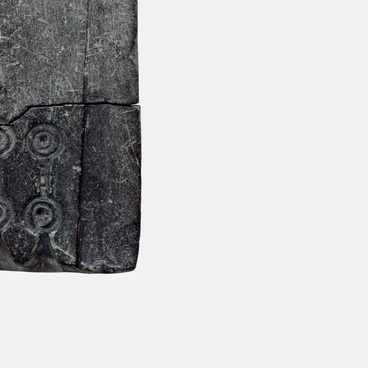The Novotemirsky mine is located in the Chesmensky district of the Chelyabinsk region. During the first archeological survey in 2014, it was found that the mine is an open pit of an oval shape, 30 by 20 meters, with waste rock dumps along its sides. During the archeological excavations of 2017–2019, it was revealed that, in addition to the quarrying, other forms of mining, including underground development, were used in ancient times. The mine was one of such sites, where fragments of late Bronze Age pottery, several fragments of livestock bones, remains of decayed wood and a massive serpentinite tool were found on its bottom.
The excavated stone mold for casting a mining tool consists of two valves — a matrix and a lid. Both are made of chloritolite.
The matrix is of subrectangular shape. On the edges of the T-shaped negative impression carved on it, there are traces of high-temperature exposure in the form of a black calcined border penetrating to a depth of 0.3 to 0.5 centimeters. The area adjacent to the impression also shows traces of use in the form of a black with reddish calcined filling outline (0.5 to 1.0 centimeter thick) of the product blank. The adjoining surfaces of the valves were carefully ground, the outer surfaces were brought to the correct shape using the pecking technique.
The copper-smelting furnace of the turn of the 2nd millennia BC, as well as the mentioned casting mold give grounds to assert that metallurgical processes at the mines of the Southern Trans-Urals during this period were not limited only to the extraction and primary enrichment of copper ore. Slags from the furnace found at the mine are similar to those found in the materials of the fortified settlements of Ustye I, Kamenny Ambar, Levoberezhnoye, Sarym-Sakly, and Arkaim, which suggests that the metallurgical procedures of smelting metals from ores at the deposit and in the settlements were identical.
Thus, all stages of metal production were
registered at the Novotemirsky mine: mining (workings of different morphology
and waste rock dumps), smelting of metals from ores (metallurgical hearth with
slags and technological ceramics), and metalworking (the casting mold with
traces of use).




